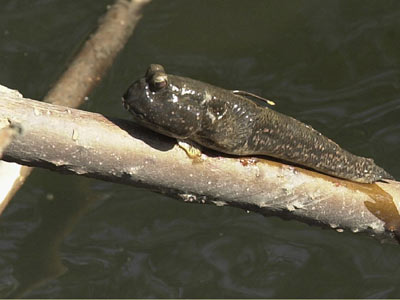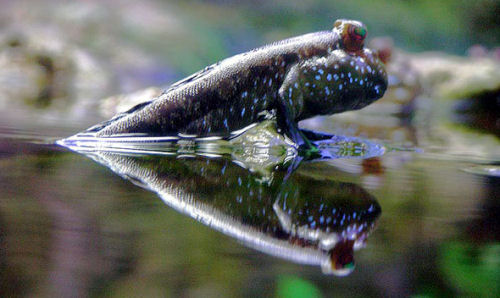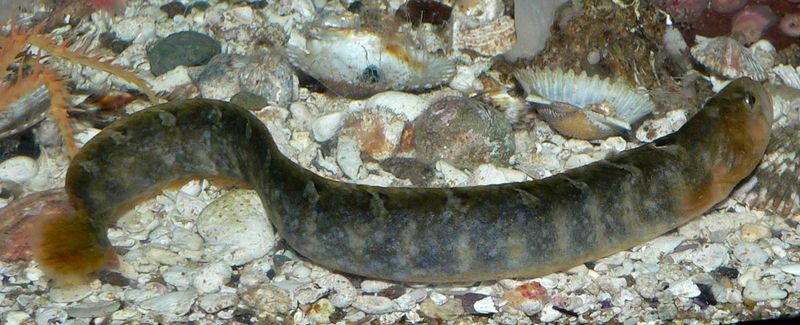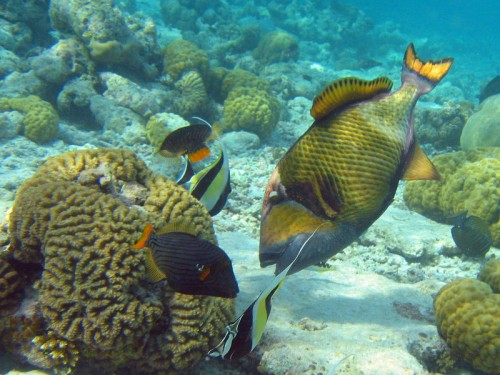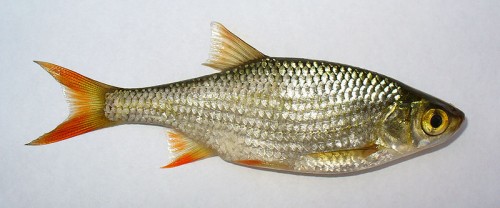Mudskipper
Looking at Mudskipper, one might get the feeling that this is how the first fish who dared to come out of the water looked like many million years ago. They are amphibious fish that have adapted to be able to survive on both land and in water.
Mudskippers are fairly large – up to 30 cm in length. They have long, muscled bodies and large eyes that look very similar to those of a frog. Front fins are elongated and highly developed, allowing the Mudskipper to jump as long as 60 cm. Along with their reptile-like details, they still preserve some physical features of fish – fins on their backs, and a typical fish tail.
These unique fish live in tropical and subtropical waters in the Atlantic and Indian Oceans. They often live inhabit swampy sea coasts, where they can move on both dry land and in the water. Some Mudskippers can even climb small trees and branches with amazing agility for a creature that’s considered a fish. They do not, however, travel far from their home waters, as the seaweeds provide them protection from many sea birds that hunt this fish.
Mudskippers dig holes, where they are safe from almost any predator. Their excavating skills are also astonishing – they can dig a 50 cm deep hole, transporting mud out of it, using their mouths. Although Mudskippers breathe with gills, they are adapted to also be able to breathe in air and they spend up to three quarters of their life on dry land.
Some subspecies of Mudskipper feed on algae they find in their home territories. When they are hungry, the Mudskippers move through the mud and swallow the top layer of mud, which is abundant in various micro organisms. Other subspecies are hunters that feed on crustaceans, worms and various bugs, and even cannibalism is not rare.
The mating period lasts May through July. During this time, the male Mudskipper becomes brighter and more colourful, distinguishing them from females. The male tries to impress females with a mating dance, and if the female shows interest, they proceed to the male’s chamber made of mud. Multiple hundred eggs are laid and after a few weeks the flood tide washes the newly hatched Mudskippers out of their nest. Mudskipper life expectancy is about 5 years.
Mudskippers are not endangered, as they are not being hunted and they inhabit very wide coastal territories. The unique Mudskipper appears to be a link between fishes and reptiles, as they lead such a unique lifestyle that it’s hard to believe they are actually fish.
